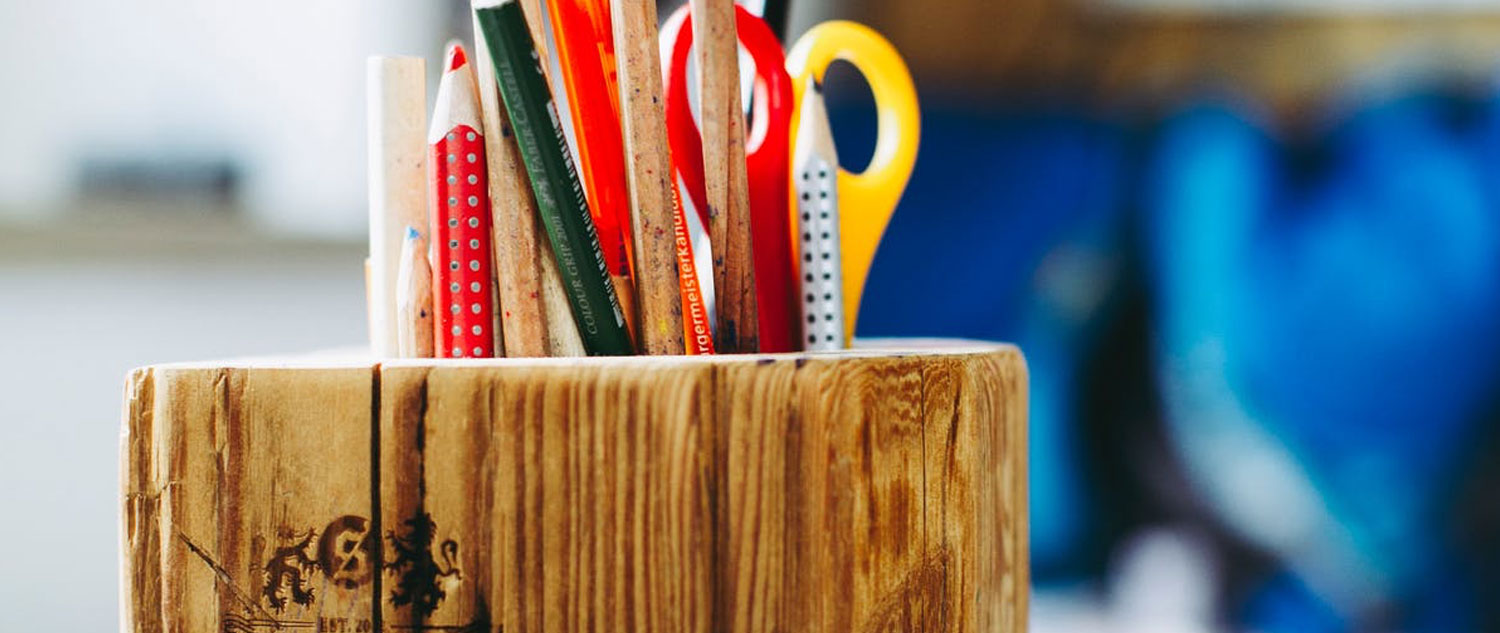Monday morning, March 16th, 2020. With the workweek set to begin, I suddenly felt uncertain. That’s because this, I knew, would be a workweek like none other. An entirely new ballgame.
My six-year-old daughter’s school had been shuttered over the weekend on account of COVID-19. My husband’s job had him working from home as well. Like millions around the globe, the pandemic had thrust our family into a new normal — ready or not.
It wasn’t me I was worried about. As a CEO of a virtual executive coaching firm, I’ve done a lot of my work in Zoom rooms since long before Zoom became a household name. And I wasn’t too concerned about my husband either — as an experienced professional, he’d figure it out.
But what about my daughter? Surely, she would need a lot of help navigating this new normal. Surely, it would fall on me to set her up for success.
Would I be up to the challenge?
The Teacher Becomes the Student
It didn’t take more than 48 hours for my husband and me to realize we would be the ones to learn from our kid! She had been hard at work that first day, on her own initiative, designing a fully functional, fully-customized workspace of her own. The level of intentionality in her design was astounding! There was a place for her tools (pencil, tape, stapler, etc.), a place for her reading books, a place for all thing’s math (coins, clocks, etc.), a place for her half-completed work and a place for her fully completed work. She had mapped it all out.
I realized that not only was my uncertainty misplaced — I had the whole thing backwards. She was light years ahead of me when it came to this whole work from home thing. I then learned other kids from her school were also proactively creating workspaces of their own volition. This is what it meant to them to “do school.”
Perhaps I should not have been so surprised. My daughter attends an accredited Montessori School. Montessori is an educational method developed by Italian physician, Maria Montessori, over 100 years ago. Though the methodological particulars are numerous and nuanced, the basic idea is this: Montessori places the child in the driver’s seat of his/her own education. The focus is on who the child is, what the child wants to learn, and how the particular child will best learn it. The learning plan and the learning space are designed with the child’s process as the priority.
As the week went on, and the more I saw my daughter actually doing just fine with the home school transition, the more I began to perceive the ways in which the principles of Montessori could help adults work more effectively from home. Sure, she misses her friends and she still talks with excitement about going back to school; however, all in all, she is accomplishing real work with a neutral to pleasant mood. I place a fairly high value on that state of being, so I started paying attention.
As we go into our second month of Shelter-In-Place, I found these principles to be tested and holding true. With two working parents and a kid in the house, we continue to do well and motivation is fairly steady with the occasional rise and fall. As such, I thought I would share what I learned.
Here are my five main takeaways from my six-year-old old mentor:
1: Design Your Work Space
As part of their Montessori training, the students know how to designate and design their workspace. “This is the space in which I do work. Within that space, here is where I do math, here is where I do writing, and here is where I do reading.” Maria Montessori understood that carving out specialized spaces in this way creates a more focused and productive experience when operating within that space.
If you’ve ever had trouble falling asleep and googled best practices, you’ve likely seen the advice to limit the bed to bed activities. Don’t eat in your bed. Don’t chat on the phone in your bed. Don’t watch TV in your bed. Your bed is for sleeping. The mind, it turns out, develops a specific association with that space — in this case, sleeping — and sends a signal to your brain that gets you into the zone for the desired result.
When it comes to working from home, we can take a page from this approach and get super intentional in declaring our spaces. For example, I supported a friend who was having a tough time focusing at home. I learned that he was doing work sitting on his living room couch, in the same room that his roommate was often deeply engaged in a video-game session. Simply shifting to a more conducive workspace and declaring it a “work-zone” — in his case, the kitchen table between the hours of 9:00am and 5:00pm — made a massive difference in his productivity levels.
By now, you may have worked from home for a few weeks already, and perhaps settled into a certain workspace within your home. But it’s worthwhile to take a second look and decide whether that workspace truly serves your purposes. I also learned from my six-year-old mentor, that it is important to bring a level of discipline to your workspace and clean it up at the end of the day rather than leaving work, with snacks and coffee sitting for hours.
2: Segment Your Work Time
Another hallmark of the Montessori method is having dedicated time-slots for various activities: work, rest, play, clean-up, and the like. For example, I noticed that my daughter’s work occurs daily in uninterrupted 90-minute blocks with 30-minute breaks.
Working from home, it’s easy to be reactive when designing our work schedules. “I’ll just grab a half-hour of work when the kids are watching TV. When they go down for a nap, I’ll pick it back up.” This may work for a select few, but it won’t for most. As the Montessori method demonstrates, for most people it’s far more productive to have concentrated blocks of work time where you can do just that one thing and nothing else, interspersed with concentrated blocks of uninterrupted time for other roles: being present with a spouse or children, cooking, cleaning, etc. There’s ample research demonstrated the futility of multi-tasking. If our plan is to simply “get to things when we get to them,” we’re setting ourselves up to fail.
Again, with many of us over a month into quarantine, we may have already settled into a routine, and that routine may look like going by the seat of our pants when it comes to setting our schedule. Ask yourself: can I work with my family to design a schedule that works best for all of us, and ensures sacred work slots? The trick is sticking to it so it becomes a routine. Routines provide a consistent structure that we can count on and begin to design around.
A note: in certain situations, as with single parents of young children, this will obviously look different; however, setting up a consistent routine for dedicated activities will support both you and your child.
3: Follow Your Interests
Montessori emphasizes identifying and catering to the particular interests of the particular child. Of course, certain foundational building blocks of a well-rounded education must be in place. A child must learn to read and to write and to count. But, if a child has a passion for dinosaurs, that passion should be worked into the learning plan. The child should count dinosaurs. Read about dinosaurs. Write about them. This isn’t a “nice-to-have” or a “cherry-on-top” — it’s absolutely essential for engaging the child fully in their learning.
Right now, my daughter is crazy about telling time. She obsessed with clocks, watches, and all manner of timekeeping. So, she integrated this into her math lessons! We spent her math time practicing how to count by fives and mapping it onto the clock, to support her passion for being able to read the glittery watch she got for a gift, and support the requirement of progressing in math.
Finding a way to align the work we do from home with our interests and passions is critical to ensuring the quality and quantity of our output amidst the challenging circumstance of working from home. Now more than ever, we must find a way to identify what really gets us out of bed in the morning…and weave that into our day-to-day.
For me — I’m passionate about catalyzing extraordinary leadership through engaging in transformative, brave, and vulnerable conversations. While I can’t be in the room with my clients right now to help them through the sticky wickets, I can learn how to use virtual tools to achieve those transformations in new and different ways. It’s true that some clients will be limited in their ability to pay and/or find time for coaching work in this moment of intense flux — but I can spend time designing new offers that support them powerfully during this time.
4: Trust the Stage That You Are In
Montessori rejects many of the arbitrary learning milestones that the educational establishment has codified through the years. Instead of asserting that a child should be able to sing the alphabet or count to 100 by a certain age, Montessori allows for a more natural unfolding of learning, trusting that a child will eventually touch all of the bases as the need arises.
For instance, my daughter loves handwriting. She loves anything that feels more grown up. As such, she has kept the holy grail of handwriting as her sole focus… the cursive book! While I was certainly proud of my young writer, I was nervous about her lack of progress in reading. Looking backwards, I see I could have trusted the method and the constant reassurances a bit more — her focus has shifted from handwriting to reading this week, as her friends want to read books to each other on Zoom.
She’s fully engaged in the stage she is in, because it fully engages her.
As adults, the same principle applies. These are disorienting times to say the least. Over the course of our individual quarantines, we may have already experienced a roller coaster of moods. Some days we feel worried or sad. Some days we feel bored and irritated. Some days we feel angry and impatient. Some days we feel peaceful and serene. Some days we even feel ambitious, or downright happy(!).
It’s easy to inject a litany of “shoulds” into the equation. If I’m anxious and scatter-brained, I should be focused. If I’m happy, I should be somber. As much as possible, take those “shoulds” out of the equation altogether. Make a habit of taking stock, throughout the day, of where you are at emotionally. For instance, if you’re feeling ambitious, run with that. Knock out those tasks and achieve those outcomes! Get it done! If you’re feeling hesitant and contemplative, lean into that. Maybe this isn’t a time for “pedal to the metal,” but rather, a time to zoom out and take into account the bigger picture. Trust the stage that you are in.
In other words, do your best to work with the mood, as opposed to against it. The latter is usually an uphill (and ineffective) battle.
5: Cultivate Curiosity
In the Montessori methodology, “play” is critical to development. A child should feel encouraged to explore and experiment without the stakes feeling so high that their actions are treated as too dangerous and therefore discouraged. For adults, “play” means to try things without attachment.
To me, this is perhaps the critical point at the heart of mastering work at home during this era of coronavirus. For many of us, this has been uncharted territory. As many have already experienced, converting to home work is rarely seamless.
We can meet this challenge with a mood of resentment: “I hate working from home and I wish I did not have to!” Or with resignation: “It’s hopeless. This work from home thing hasn’t worked, and it never will.” But those moods aren’t going to get us very far. Rather, we must try to cultivate a mood of curiosity — “Working from home has been different and strange. What could I change next week that would alter my experience? What could I learn here that I will want to continue after this Shelter-In-Place is over?”
It’s from that place of curiosity that we can get playful. We can think outside of the box. We can try new things — if we like it, we keep it. If we don’t, we chuck it and move on. No big deal!
For example, one of my employees just made the decision to work Friday through Tuesday and have her “weekend” be Wednesday and Thursday. Weird, right? But here’s the thing. That arrangement, however wonky, supported her thriving in her new work situation. Her job was one that could easily shift in this way, so why not?
The point is, we need to be able to “play” a little bit and figure out what works.
The Key to Wisdom
One of my colleagues shared with me an ancient Jewish aphorism that I love: “Who is truly wise? Someone who can learn from anyone.” Going into our coronavirus quarantine, I assumed that I, the All-Knowing Adult, would be the one to teach my daughter how make the most of her situation. But thanks to her primary education with a disciplined Montessori approach, I was so delighted to have been proven wrong, and to discover that the wisdom was hers to share all along.
How have you been making the most of your work-from-home situation? Let me know in the comments, and I’d love to start a dialogue with you.


